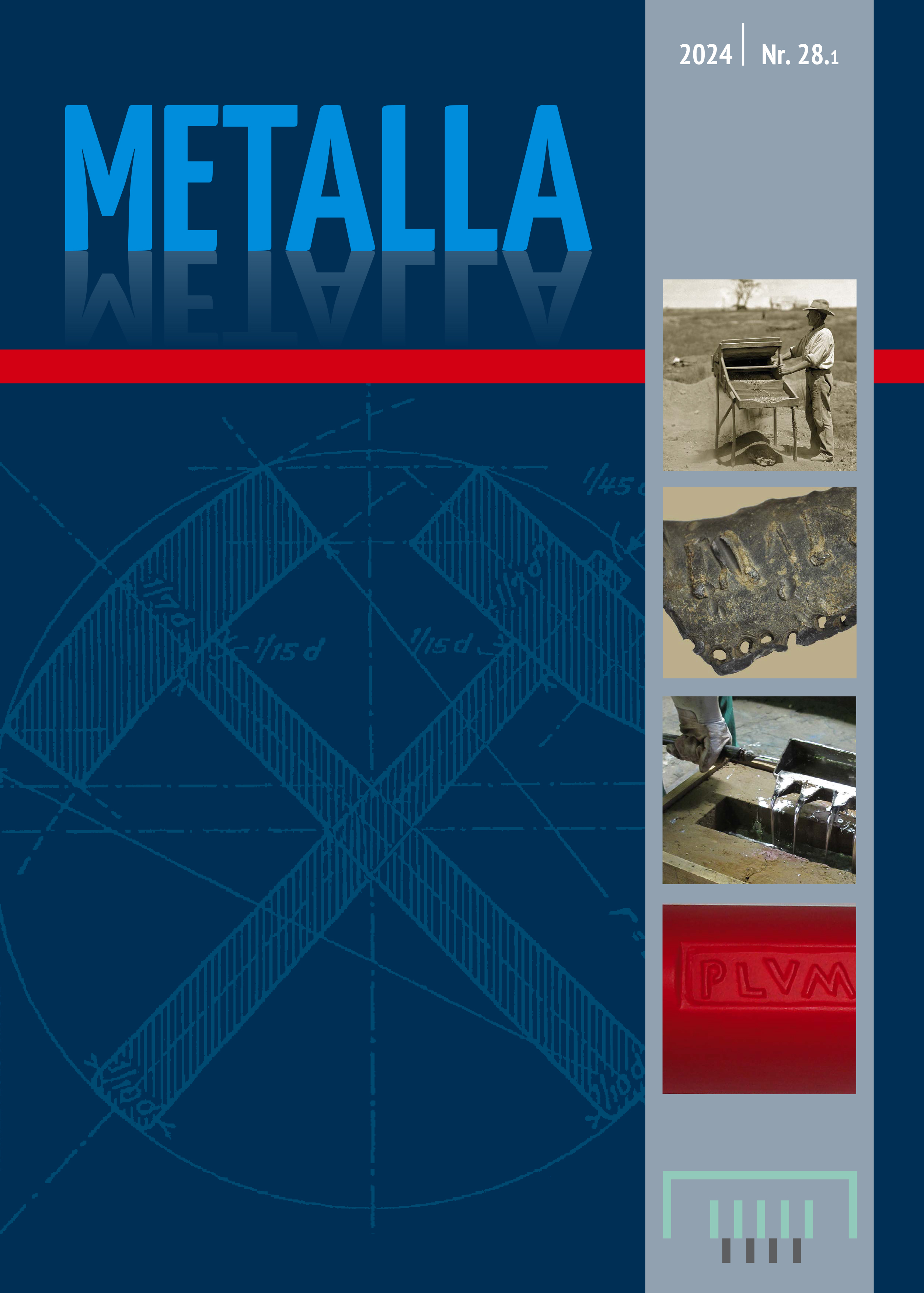The Making of Roman Lead Ingots. Their Casting by Experiment and the Archaeological Evidence
DOI:
https://doi.org/10.46586/metalla.v28.2024.i1.23-40Keywords:
Roman lead ingots with inscriptions, casting moulds made of clay-sand and wood, chaîne opératoire, arachaeological experimentsAbstract
Casting experiments in Brilon-Hoppecke (North Rhine-Westfalia, Germany) in 2011 and 2012 as well as in 2015 aimed to reconstruct the production of Roman lead ingots with the help of archaeological experiments on the one hand; on the other hand, traces of the moulding process on the Roman lead ingots themselves and the epigraphic evidence were examined to provide further information on the production process. The results of this research, suggest that most of the lead ingots were very likely cast in clay sand moulds which almost completely disintegrated after the ingots had been removed. In a few cases, wood could be verified as the material for the moulds. Finally, all known artefacts associated with the casting of lead ingots have been critically examined and reinterpreted.
Downloads
Published
Issue
Section
License
Copyright (c) 2024 Norbert Hanel, Ingo Pfeffer

This work is licensed under a Creative Commons Attribution 4.0 International License.



